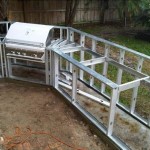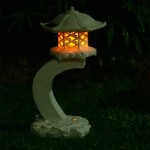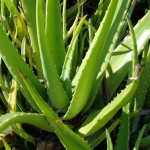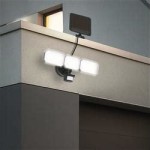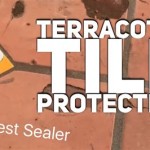Outdoor Foam for Cushions: A Comprehensive Guide
Outdoor cushions provide comfort and aesthetic appeal to patios, decks, poolside areas, and other outdoor living spaces. Selecting the appropriate foam for these cushions is critical to ensuring durability, comfort, and resistance to the elements. Outdoor foam differs significantly from indoor foam due to its specialized properties designed to withstand moisture, sunlight, and temperature fluctuations. This article examines the key considerations for choosing outdoor foam for cushions, focusing on the common types of foam available, their characteristics, and factors influencing longevity and performance.
Understanding the Unique Demands on Outdoor Cushion Foam
Outdoor environments present unique challenges for cushion foam. Unlike indoor cushions, outdoor cushions are exposed to direct sunlight, which can degrade foam over time. Ultraviolet (UV) radiation breaks down the cellular structure of many foams, causing them to become brittle and lose their support. Moisture, whether from rain, humidity, or pool splashes, poses another significant threat. Traditional foam materials readily absorb water, creating a breeding ground for mold and mildew, which can not only damage the foam but also create unpleasant odors and health hazards. Temperature fluctuations, including freezing temperatures in winter and intense heat in summer, can also affect the foam’s structural integrity and comfort.
Therefore, the ideal outdoor cushion foam must possess specific properties to withstand these conditions. It should be resistant to UV degradation, water absorption, and the growth of mold and mildew. Additionally, it should maintain its shape and support over time, even with repeated use and exposure to varying temperatures. This necessitates the selection of foam specifically engineered for outdoor applications.
Common Types of Outdoor Cushion Foam
Several types of foam are commonly used for outdoor cushions, each with its own advantages and disadvantages. The most popular options include open-cell foam, closed-cell foam, and reticulated foam.
Open-Cell Foam: This type of foam has interconnected cells that allow air and water to flow freely through it. While open-cell foam offers good breathability and comfort, it is also more susceptible to absorbing moisture. Standard open-cell foam is generally not suitable for outdoor applications unless it is treated with a water-resistant coating or sealant. However, specialized open-cell foams with enhanced moisture resistance are available. These foams often incorporate antimicrobial agents to inhibit the growth of mold and mildew.
Closed-Cell Foam: Closed-cell foam has cells that are not interconnected, preventing water from penetrating the material. This makes it highly water-resistant and ideal for applications where moisture exposure is a concern. Closed-cell foam is available in various densities, offering different levels of support and firmness. While closed-cell foam is more resistant to water damage than open-cell foam, it can be less comfortable because it does not breathe as well. This can lead to heat buildup, especially in warm climates.
Reticulated Foam: Reticulated foam, also known as filter foam or dryfast foam, is specifically designed for outdoor applications. It has a unique open-pore structure that allows water to drain quickly and air to circulate freely. This prevents water from pooling inside the cushion and promotes rapid drying, inhibiting the growth of mold and mildew. Reticulated foam is also highly resistant to UV degradation, making it a durable choice for outdoor cushions. However, reticulated foam can be more expensive than other types of foam.
Within these categories, different materials offer varying levels of performance. Polyurethane foam is a common choice for both open-cell and closed-cell applications, but its UV resistance is limited. Polyethylene foam, a type of closed-cell foam, offers better water resistance and durability. Furthermore, specialized outdoor-grade foams are available that are formulated with additives to enhance their resistance to UV radiation, moisture, and microbial growth.
Factors Influencing Longevity and Performance
The longevity and performance of outdoor cushion foam are influenced by several factors, including the type of foam selected, its density, the climate it is exposed to, and the level of maintenance it receives.
Foam Density: The density of the foam refers to its weight per unit volume. Higher-density foams tend to be more durable and offer better support than lower-density foams. However, higher-density foams can also be more expensive and less comfortable. The optimal density for outdoor cushion foam depends on the intended use of the cushion. For example, cushions that will be used frequently and subjected to heavy loads should have a higher density than cushions that will be used less often.
Climate: The climate in which the cushions will be used plays a significant role in their longevity. In hot, sunny climates, UV degradation is a major concern, so foams with high UV resistance are essential. In humid climates, moisture resistance and antimicrobial properties are particularly important. In cold climates, the foam should be able to withstand freezing temperatures without becoming brittle or cracking.
Maintenance: Regular maintenance can significantly extend the life of outdoor cushion foam. This includes cleaning the cushions regularly to remove dirt, debris, and spills. It is also important to store the cushions properly during the off-season to protect them from the elements. Cushions should be stored in a dry, well-ventilated area, such as a shed or garage. If the cushions are left outdoors during the off-season, they should be covered with a waterproof cover to protect them from rain, snow, and ice.
Fabric Selection: The fabric used to cover the cushion also plays a role in the foam's protection and longevity. Outdoor fabrics should be water-resistant, UV-resistant, and breathable. Solution-dyed acrylic fabrics are a popular choice for outdoor cushions because they are highly resistant to fading and weathering. Polyester fabrics are also a good option, but they may not be as durable as acrylic fabrics. Regardless of the fabric selected, it is important to choose a fabric that is easy to clean and maintain.
Construction Techniques: The way the cushion is constructed can also affect its performance. Cushions with well-sealed seams are less likely to absorb water. Using rust-proof zippers and closures can also help prevent water damage. Additionally, cushions with built-in drainage systems can help to promote quick drying and prevent the buildup of moisture.
UV Protection: Even the best outdoor foam can degrade over time if it is constantly exposed to direct sunlight. To mitigate UV damage, consider using UV-resistant fabrics or applying a UV protectant spray to the cushions. Positioning the cushions in shaded areas can also help to reduce their exposure to direct sunlight.
Proper Drainage: Ensuring proper drainage is crucial to preventing water damage. Cushions should be designed to allow water to drain freely and prevent pooling. This can be achieved by using reticulated foam, incorporating drainage holes, or using a mesh bottom. Regularly inspecting the cushions for signs of water damage and addressing any issues promptly can also help to extend their lifespan.
Choosing the right outdoor foam for cushions is a critical decision that impacts both the comfort and longevity of your outdoor furniture. By carefully considering the type of foam, its density, the climate it will be exposed to, and the maintenance it will receive, it is possible to select a foam that will provide years of comfortable and durable service. Proper maintenance, including regular cleaning and storage, is also essential to maximizing the lifespan of outdoor cushions.
Specific Foam Considerations
Beyond the general types of foam, several specific considerations apply to selecting the best option for particular needs.
Comfort Level: The desired comfort level for the cushions is an important factor to consider. For cushions that will be used for lounging or relaxation, a softer, more plush foam may be preferred. For cushions that will be used for dining or seating, a firmer, more supportive foam may be more appropriate. The density and compression rating of the foam will affect its comfort level. A higher compression rating indicates a firmer foam that provides more support.
Water Repellency vs. Waterproofing: Understanding the difference between water repellency and waterproofing is important. Water-repellent foams are treated to resist water penetration, but they are not completely waterproof. Waterproof foams, on the other hand, are impermeable to water. For outdoor cushions, water repellency is often sufficient, as it allows the foam to breathe and dry quickly. However, for cushions that will be exposed to constant moisture, such as those used on boats or near pools, a waterproof foam may be necessary.
Antimicrobial Properties: Look for foams that have been treated with antimicrobial agents to inhibit the growth of mold and mildew. These agents can help to prevent odors and extend the life of the foam. Antimicrobial treatments are particularly important for cushions that will be used in humid climates or near water.
Environmental Considerations: For environmentally conscious consumers, there are several eco-friendly foam options available. These include foams made from recycled materials, foams that are manufactured using sustainable processes, and foams that are biodegradable. While eco-friendly foams may not always offer the same level of performance as traditional foams, they can be a good option for those who are looking to reduce their environmental impact.
Cost: The cost of outdoor cushion foam can vary significantly depending on the type of foam, its density, and its features. Reticulated foam is typically more expensive than open-cell or closed-cell foam. Higher-density foams are also generally more expensive than lower-density foams. When budgeting for outdoor cushion foam, it is important to consider the long-term cost of ownership. While a less expensive foam may save money upfront, it may not last as long as a more expensive foam, requiring replacement sooner.
Customization: Many foam suppliers offer customization options, allowing customers to specify the exact dimensions and shape of their cushion foam. This can be particularly useful for cushions that are not standard sizes or shapes. Customization may also be available for foam density and compression rating, allowing customers to tailor the foam to their specific comfort preferences.
When selecting outdoor foam for cushions, it is important to consider all of these factors carefully. By taking the time to research the different options and choose the right foam for your specific needs, it is possible to create comfortable, durable, and long-lasting outdoor cushions that will enhance your outdoor living space for years to come.

Make Your Patio Perfect With Custom Outdoor Cushions

Replacement Cushions Foam

Bespoke Outdoor Cushions For Garden Furniture Foam Filling Options

Dryfast Foam 24x72 Outdoor Furniture Boat Patio Upholstery All Weather Cushion Seating

Outdoor Cushions Garden Pallet Quick Drying Reticulated Foam

Outdoor Foam Furniture Cushion F C Hancox

The Best Fabric Foam Thread For Outdoor Cushions

Sheets Of Foam For Outdoor Cushions Foamorder Com

Foam Starr Dry Fast Marine Outdoor Upholstery Grade All Weather Patio Furniture Seat Cushions

Poly Fil Nu Foam Densified Polyester Cushion 24 X 4 Square

